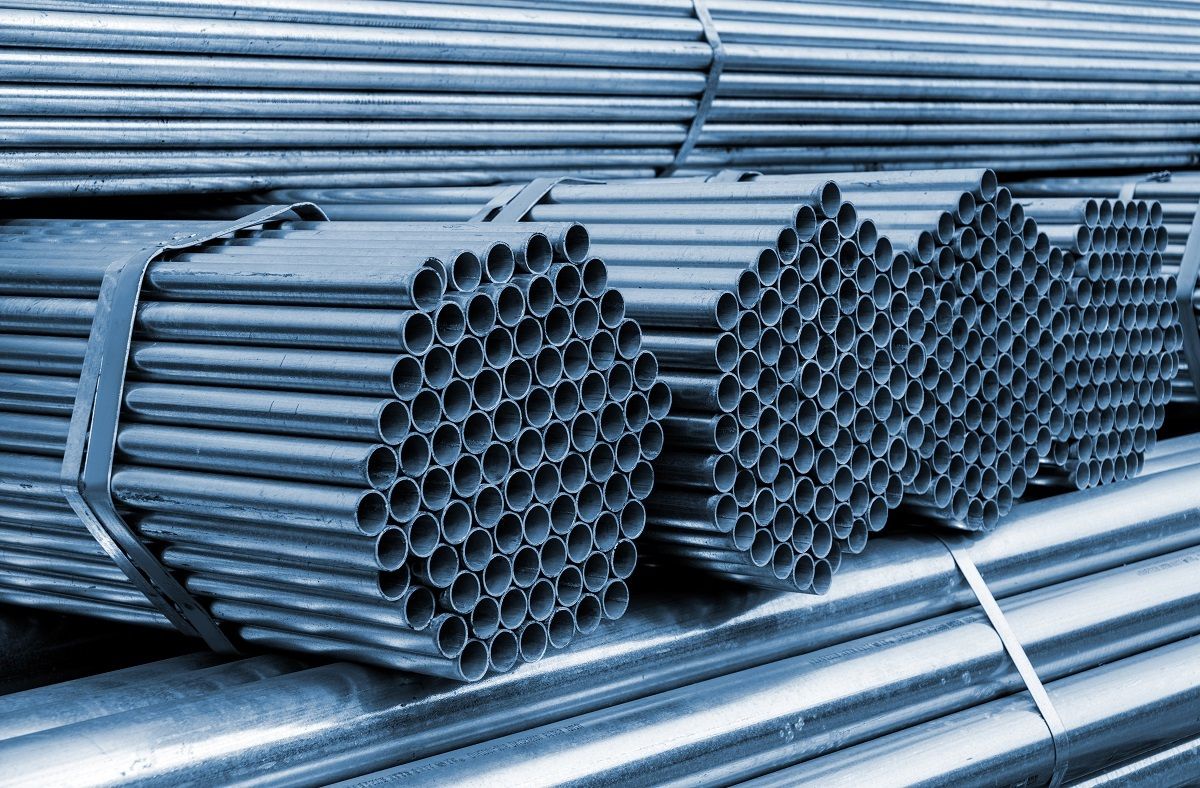
Steel is everywhere! From the cars we drive to the buildings we live in, steel plays a huge role in our daily lives. But how much do you really know about this incredible material? Did you know that steel is an alloy made primarily of iron and carbon? Or that it can be recycled endlessly without losing its strength? Steel production has a rich history dating back thousands of years, evolving from simple iron smelting to advanced techniques that produce the high-quality steel we use today. In this post, we'll uncover 50 fascinating facts about steel that will surprise you and maybe even change how you see the world around you. Buckle up and get ready to dive into the world of steel!
Key Takeaways:
- Steel is a super-strong material made from iron and carbon. It's used in buildings, cars, and even the world's tallest skyscrapers!
- Did you know steel can be as soft as a rubber band or as hard as a diamond? It's also in everyday items like kitchen appliances and musical instruments.
The Basics of Steel
Steel is an essential material in modern life. Its versatility and strength make it a cornerstone in various industries. Here are some fundamental facts about steel.
- Steel is an alloy made primarily of iron and carbon.
- The carbon content in steel typically ranges from 0.2% to 2.1%.
- Adding carbon to iron increases its strength and hardness.
- Steel is 1,000 times stronger than iron in its pure form.
- There are over 3,500 different grades of steel, each with unique properties.
Historical Significance of Steel
Steel has played a crucial role throughout history. Its development and use have shaped civilizations and industries.
- The earliest known steel dates back to 1800 BC in Anatolia (modern-day Turkey).
- The Bessemer process, developed in the 1850s, revolutionized steel production by making it more efficient.
- The Eiffel Tower, completed in 1889, used over 7,000 tons of steel.
- During World War II, steel production was vital for manufacturing weapons and vehicles.
- The Golden Gate Bridge, completed in 1937, contains approximately 83,000 tons of steel.
Types of Steel
Steel comes in various types, each suited for different applications. Understanding these types helps in choosing the right steel for specific needs.
- Carbon steel is the most common type, making up about 90% of steel production.
- Alloy steel contains additional elements like chromium, nickel, and vanadium to enhance properties.
- Stainless steel is known for its corrosion resistance due to its high chromium content.
- Tool steel is designed for making tools and is known for its hardness and resistance to abrasion.
- Weathering steel forms a stable rust-like appearance after exposure to weather, reducing the need for painting.
Steel in Construction
Steel's strength and durability make it a preferred material in construction. It supports structures and ensures their longevity.
- Skyscrapers often use steel frames to support their immense weight.
- Steel is used in the construction of bridges due to its high tensile strength.
- Reinforced concrete contains steel bars or mesh to improve its tensile strength.
- Prefabricated steel buildings are popular for their quick assembly and cost-effectiveness.
- Steel roofing is durable, fire-resistant, and can last up to 50 years.
Steel in Transportation
The transportation industry relies heavily on steel for building vehicles and infrastructure. Its properties make it ideal for this sector.
- Cars contain about 50% steel by weight.
- High-speed trains use steel wheels and tracks for durability and safety.
- Ships and submarines are constructed using steel for strength and resistance to water pressure.
- Airplanes use high-strength steel in landing gear and other critical components.
- Bicycles often use steel frames for their balance of strength and flexibility.
Environmental Impact of Steel
Steel production and recycling have significant environmental implications. Understanding these impacts helps in making sustainable choices.
- Steel is 100% recyclable without loss of quality.
- Recycling steel saves 75% of the energy required to produce new steel.
- The steel industry accounts for about 7-9% of global CO2 emissions.
- Modern steel plants use electric arc furnaces, which are more energy-efficient than traditional blast furnaces.
- Using recycled steel reduces the need for mining raw materials, conserving natural resources.
Innovations in Steel
Advancements in steel technology continue to improve its properties and applications. These innovations drive progress in various fields.
- High-strength, low-alloy (HSLA) steel is lighter and stronger than traditional steel.
- Advanced high-strength steel (AHSS) is used in automotive manufacturing to improve fuel efficiency and safety.
- Nano-steel incorporates nanotechnology to enhance strength and durability.
- Smart steel can change its properties in response to environmental conditions.
- 3D printing with steel allows for the creation of complex structures with high precision.
Fun Facts about Steel
Steel has some interesting and surprising aspects that highlight its unique characteristics and uses.
- The world's tallest building, the Burj Khalifa, contains over 39,000 tons of steel.
- The Brooklyn Bridge, completed in 1883, was the first steel-wire suspension bridge.
- Steel can be made to be as soft as a rubber band or as hard as a diamond.
- The steel industry employs over 6 million people worldwide.
- A single steel beam can support the weight of 20 elephants.
Steel in Everyday Life
Steel is present in many everyday items, often without us even realizing it. Its ubiquity underscores its importance.
- Kitchen appliances like refrigerators and ovens are made from stainless steel.
- Cutlery, including knives, forks, and spoons, is often made from stainless steel.
- Steel cans are used for packaging food and beverages.
- Office buildings use steel for structural support and design elements.
- Steel is used in the manufacturing of musical instruments like pianos and guitars.
Future of Steel
The future of steel looks promising with ongoing research and development. Innovations will continue to enhance its applications and sustainability.
- Researchers are developing steel that can self-heal when damaged.
- Green steel production aims to reduce carbon emissions by using hydrogen instead of coal.
- Lightweight steel alloys are being created for use in aerospace and automotive industries.
- Smart coatings for steel can provide additional protection against corrosion and wear.
- The integration of artificial intelligence in steel manufacturing can optimize production processes and reduce waste.
The Power of Steel
Steel's impact on our world can't be overstated. From towering skyscrapers to everyday tools, steel shapes our lives in countless ways. Its strength, durability, and versatility make it a cornerstone of modern civilization. Whether it's in construction, transportation, or manufacturing, steel's role is indispensable.
Understanding these 50 facts about steel gives a deeper appreciation for this incredible material. It's not just about its physical properties but also its historical significance and future potential. As technology advances, steel continues to evolve, meeting new challenges and pushing boundaries.
Next time you see a bridge, drive a car, or use a kitchen appliance, remember the remarkable journey of steel. Its story is one of innovation, resilience, and endless possibilities. Steel isn't just a material; it's a testament to human ingenuity and progress.
Frequently Asked Questions
Was this page helpful?
Our commitment to delivering trustworthy and engaging content is at the heart of what we do. Each fact on our site is contributed by real users like you, bringing a wealth of diverse insights and information. To ensure the highest standards of accuracy and reliability, our dedicated editors meticulously review each submission. This process guarantees that the facts we share are not only fascinating but also credible. Trust in our commitment to quality and authenticity as you explore and learn with us.


